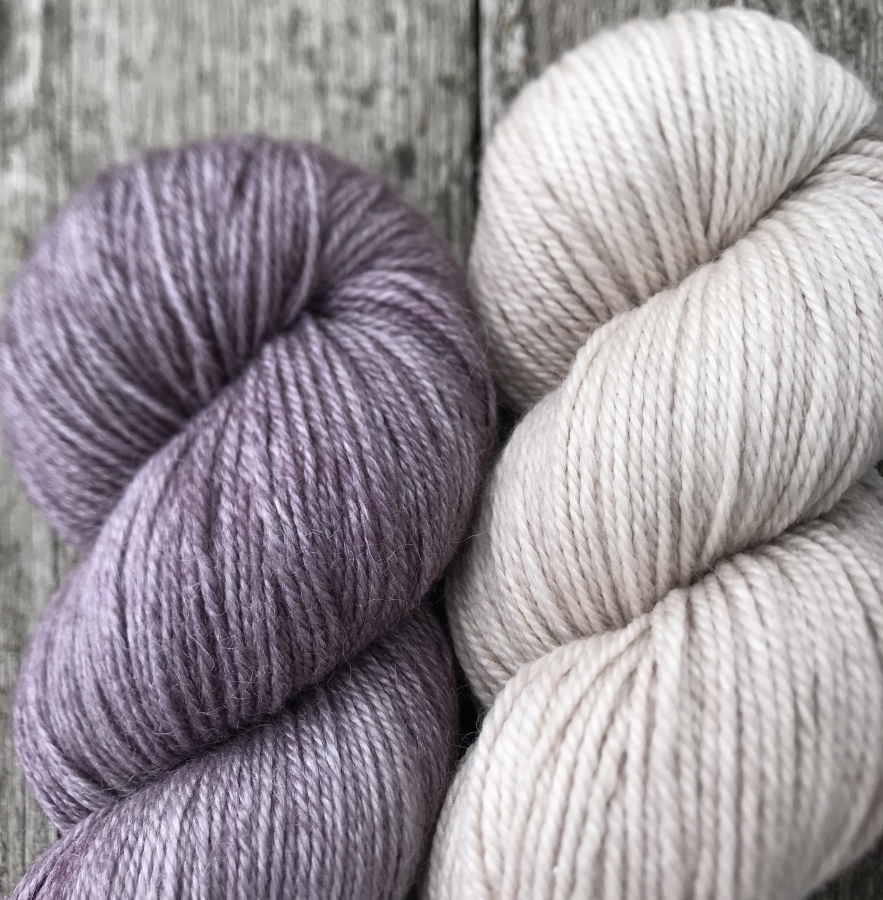If you love to knit or crochet your own garments and accessories, you probably want them to last a while and to stay in great shape. One thing that can cause a handmade item to look worn is if the yarn starts to pill. So how do you choose a yarn that won’t pill? Here are some tips.
A yarn that won’t pill can be created in a couple of different ways: choosing a fibre type or blend that’s more likely to stick together, or twisting the fibres more tightly or complexly when the yarn is spun and plied. Let’s step through these scenarios.
Plant Fibres
Some yarns are more susceptible to pilling than others. Plant fibres tend to create yarns that won’t pill as much as others. Look for cotton, linen, or bamboo yarns, or yarns with these fibres in a blend. Plant fibres tend to be smoother than animal fibres, so are less likely to have fly-away parts of the fibre that can initiate pilling. If you decide to go for a blend, the yarn is less likely to pill if the fibres are blended uniformly. Look for a consistent appearance and feel of the yarn as you move along a strand.
Twist and Plies
There are two dimensions of the construction of a yarn that won’t pill as much as others: the number of plies, and the twist of the yarn. Plies is the number of individual strands that make up the yarn. If you hold the yarn at two points and twist it in opposite directions, you’ll be able to see the strands separate if your yarn has multiple plies. The more plies a yarn has, the less likely it is to pill.
The second dimension, twist, is how tightly each of the plies is wrapped around itself before being combined to make the full yarn. This can be difficult to see directly, but what you can look for instead is how tightly the plies are twisted around one another. If you hold up a yarn with multiple plies vertically, you’ll see the plies form a series of diagonal lines across the yarn. The closer these diagonal lines are to horizontal, the tighter the twist, and the less likely it is the yarn will pill.
Some yarns have just one strand; these are more likely to pill, and are often designed to have some of the fibre fluff away from the strand to create a particular effect, which brings us to the last point.
Embrace the Halo
One way to avoid the appearance of pilling is to go to the other end of the spectrum and try fibres that intentionally fluff, creating a halo of fibre extending away from the main fabric. When knitted or crocheted, these yarns make a uniform layer of fluffed fibre, rather than isolated pilling, which creates a really beautiful effect. Mohair is a great option for this. Mohair is a very light and fluffy fibre and forms a beautiful, soft, warm halo.
It won’t hold a thread on its own, so mohair yarns typically have a core of another fibre type, often silk, that provides strength, while the mohair creates the halo. Alpaca can also be a great choice for this effect. Look for woven or braided alpaca yarns, or alpaca yarns with a silk core.
Caring for Your Hand-Made Items
Pilling happens when part of the fibre that makes up yarn pulls away from the rest of the fibre. This can happen in response to abrasion, from washing or from regular wear. This tendency of the fibre to pull apart can be exacerbated if the fibres are washed with harsh detergents. To reduce pilling, hand wash your knits with a gentle soap.
Ready to get started? Shop our knit kits and downloadable knitting patterns to inspire your next project!

